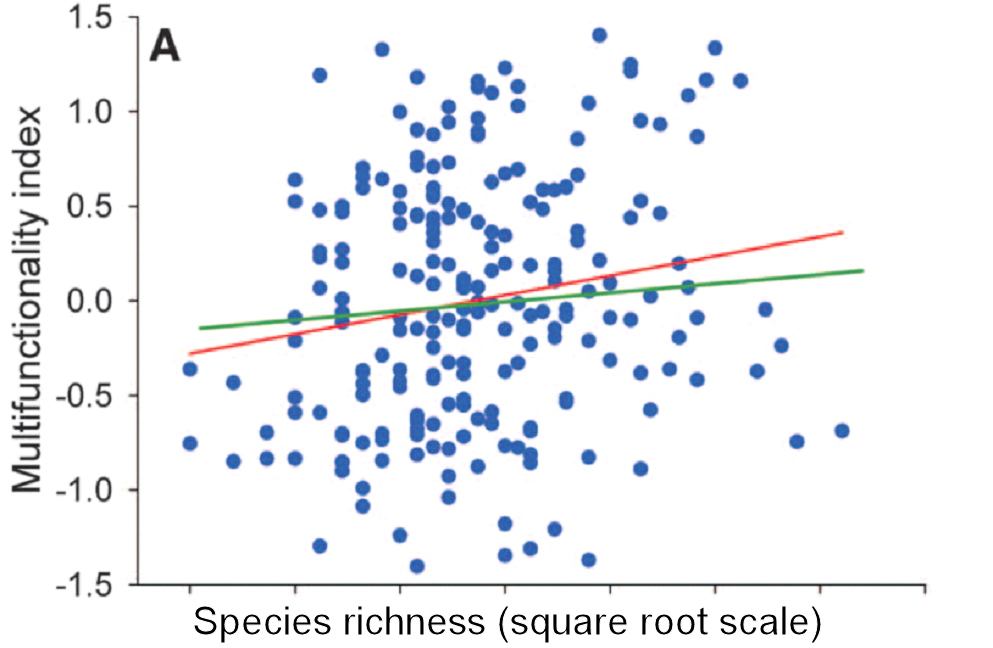If you are a conservation biologist and you wish to save all or as many species as possible, your first problem is detectability. Does the species of concern live in this habitat? If it is present how many are there, and is their abundance changing from year to year? These are fundamental questions in conservation science and there is accordingly a very large literature on how to answer these simple questions for animals in different taxonomic groups. I want to deal briefly here with rare species in which the issue of detectability is most critical.
There is a large array of papers on detection methods in the conservation literature (e.g. Brodie et al. 2018; Crates et al. 2017; Steenweg et al. 2016; Clement et al. 2016, Trolliet et al. 2014). Detection methods vary from live trapping marked individuals, visual sighting of unmarked individuals, camera photos of marked or unmarked individuals, sign data such as tracks or scats in snow, mud or sand, DNA fingerprinting, and many clever natural-history- derived methods to measure detection. These methods are well developed for common animals (Williams et al. 2002).
Rare species are the first problem faced by all these detection methods. Rare species range from those virtually impossible to detect with current technology to those that turn up infrequently in the designated detection device. The conservation challenge of rare species is difficult if they are hard to detect and difficult to study so that we have few natural history parameters to guide conservation actions. For these we can only set aside what we think are suitable areas and conserve them.
The technology of monitoring rare species that can be detected at some reasonable level has greatly improved with the advent of passive-infrared-cameras that can be deployed 24-7 to capture images of whomever walks or swims by. But this technology raises a whole set of methodological issues that must be addressed. The first and most obvious one is the skill of the observer both in setting up the cameras and in looking at the photos to identify correctly the species present. The second and more difficult question is what to count as a detection or ‘hit’. If your question is simply ‘occupancy’ seeing one photograph in the time period of the study provides a + for occupancy. But many ecologists wish to connect the dots from occupancy scores to abundance so that some index of population numbers can arise from these camera data. To make this leap of faith relies heavily on the experimental design of the camera placements, the number of cameras, the make of the cameras (Meek et al. 2014), and the exact placement of cameras on trees or stakes to cover a specific area of habitat. Clearly if cameras are placed too close to one another, the photos from the different cameras are not independent, as most of the models of occupancy assume (Brodie et al. 2018). If bait is used with the cameras the situation becomes even more complex because some species may be attracted while others are repelled by the bait. In general camera detections or ‘hits’ for a particular species are a measure of activity rather than a direct measure of abundance, and so often the assumption is made that activity = abundance, which must be justified. In the extreme case in which a density estimate is needed from camera data, the problem of ‘edge effects’ of the sampled area must be considered just as it does with grid trapping (e.g Thornton and Pekins 2015). New approaches for estimating density from camera data appear almost daily and must be evaluated for accuracy (Nakashima et al. 2018).
We are now in the exponential phase of camera trapping with cameras put up in all sorts of spatial designs for different lengths of time with the hope that someone will have time to look at the photos and some clever statistician can factor out all the potential biases and non-independence of the resulting data. So in a nutshell my simple advice is to use cameras to gather wildlife information but think carefully about what exactly you wish to achieve: occupancy?, an index of abundance?, actual numerical abundance? population density? Or simply beautiful photos of interesting animals? And in the end you may be envious of plant ecologists whose plants do not walk away when you census them.
Brodie, J.F., et al. (2018). Models for assessing local-scale co-abundance of animal species while accounting for differential detectability and varied responses to the environment. Biotropica 50, 5-15. doi: 10.1111/btp.12500.
Clement, M. J., J. E. Hines, J. D. Nichols, K. L. Pardieck, and D. J. Ziolkowski. 2016. Estimating indices of range shifts in birds using dynamic models when detection is imperfect. Global Change Biology 22:3273-3285. doi: 10.1111/gcb.13283
Crates, R., L. Rayner, D. Stojanovic, M. Webb, and R. Heinsohn. 2017. Undetected Allee effects in Australia’s threatened birds: implications for conservation. Emu 117:207-221. doi: 10.1080/01584197.2017.1333392
Meek, P.D., et al. (2014). Camera traps can be heard and seen by animals. PLoS ONE 9, e110832. doi: 10.1371/journal.pone.0110832.
Nakashima, Y., Fukasawa, K., and Samejima, H. (2018). Estimating animal density without individual recognition using information derivable exclusively from camera traps. Journal of Applied Ecology 55, 735-744. doi: 10.1111/1365-2664.13059.
Smith, D.H.V. and Weston, K.A. (2017). Capturing the cryptic: a comparison of detection methods for stoats (Mustela erminea) in alpine habitats. Wildlife Research 44, 418-426. doi: 10.1071/WR16159.
Steenweg, R., et al. (2016). Camera-based occupancy monitoring at large scales: Power to detect trends in grizzly bears across the Canadian Rockies. Biological Conservation 201:192-200. doi: 10.1016/j.biocon.2016.06.020
Thornton, D.H. and Pekins, C.E. (2015). Spatially explicit capture-recapture analysis of bobcat (Lynx rufus) density: implications for mesocarnivore monitoring Wildlife Research 42, 394-404. doi: 10.1071/WR15092.
Trolliet, F., et al. (2014). Use of camera traps for wildlife studies. A review. Biotechnology, Agronomy, Society and Environment (BASE) 18, 446-454.
Williams, B.K., Nichols, J.D., and Conroy, M.J. (2002) ‘Analysis and Management of Animal Populations.’ (Academic Press: New York.). 817 pp.
